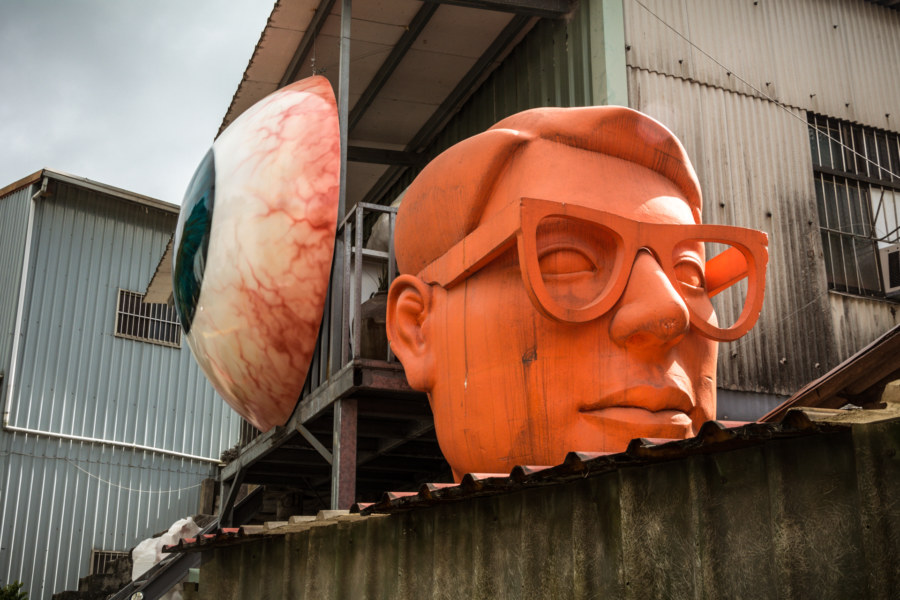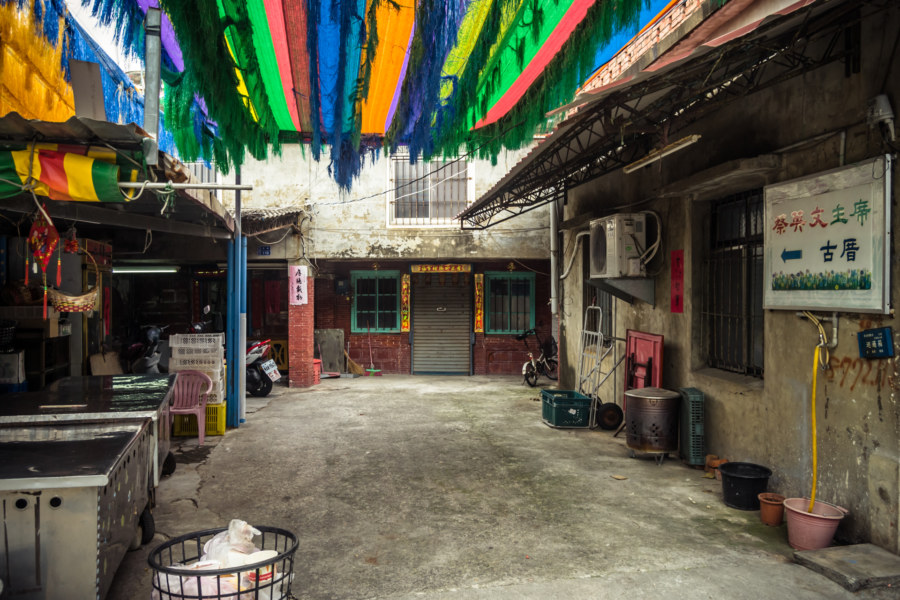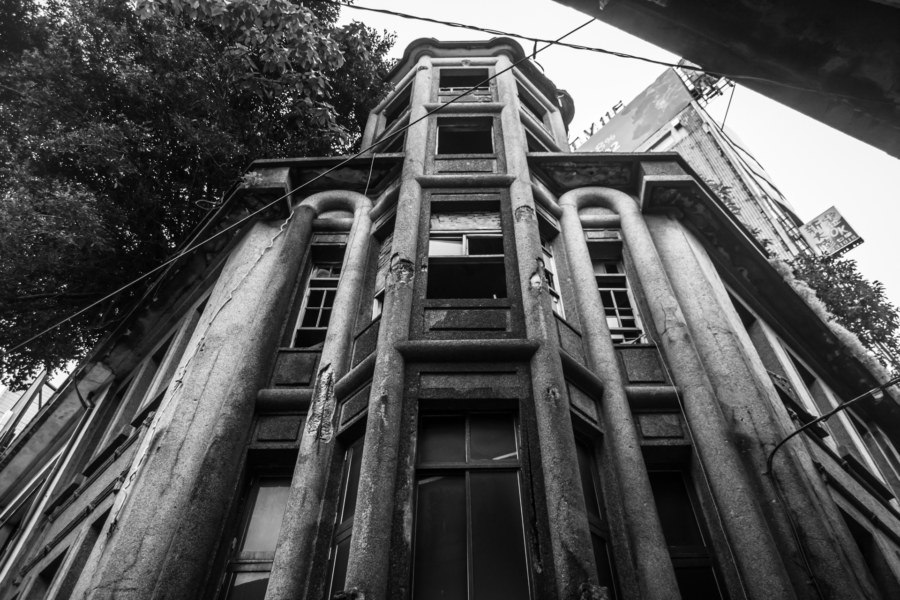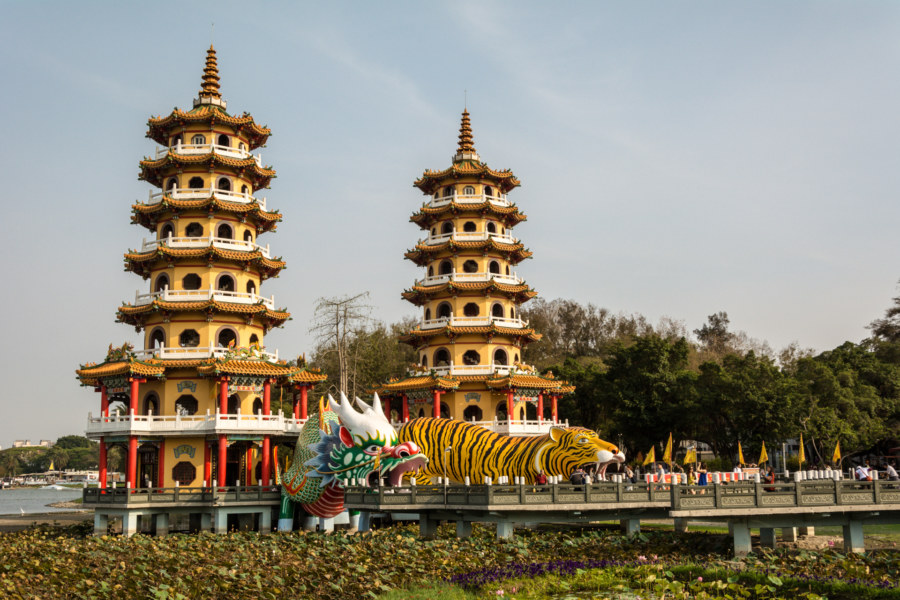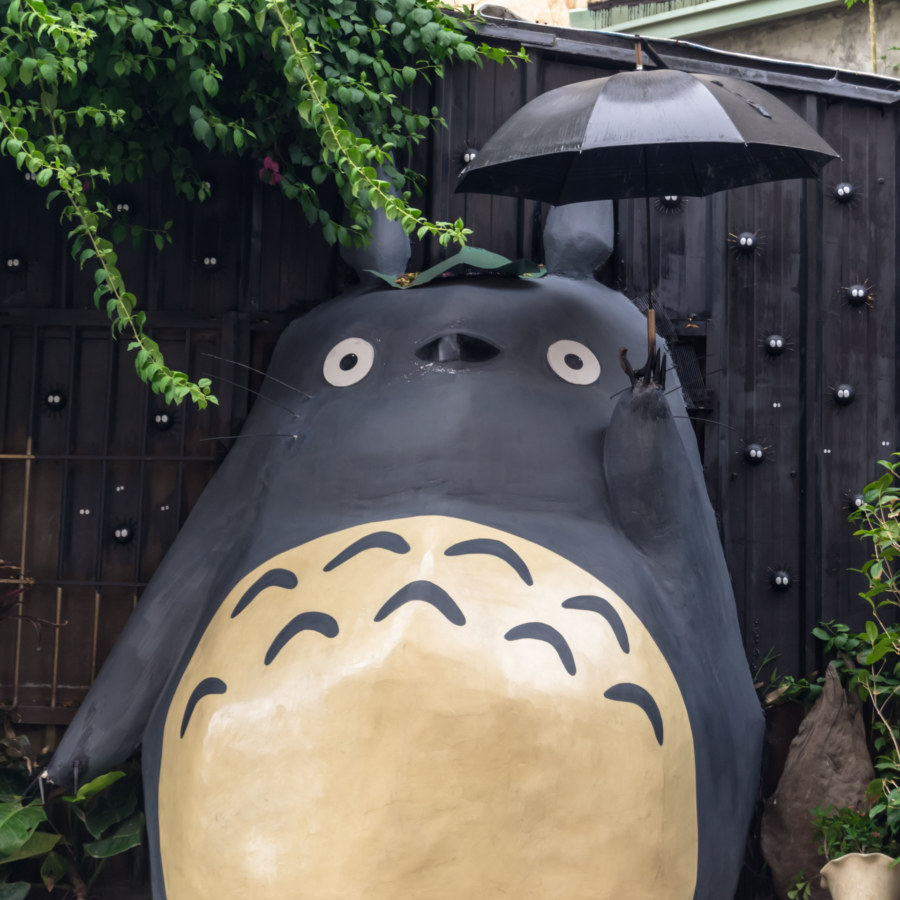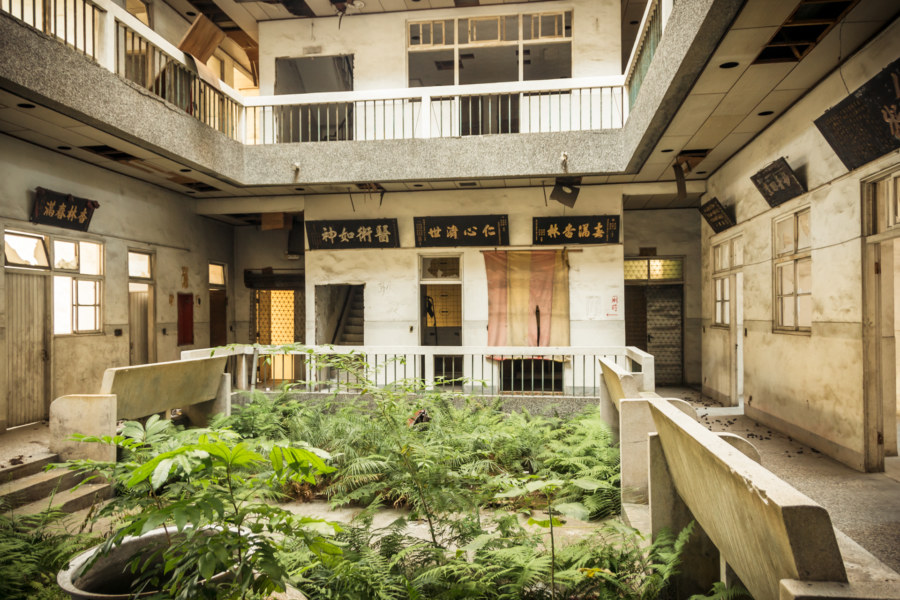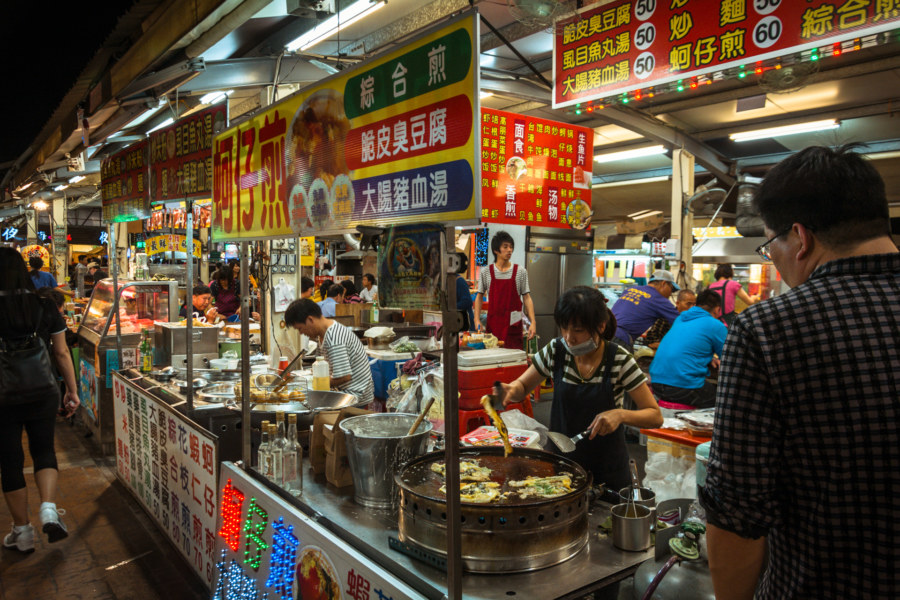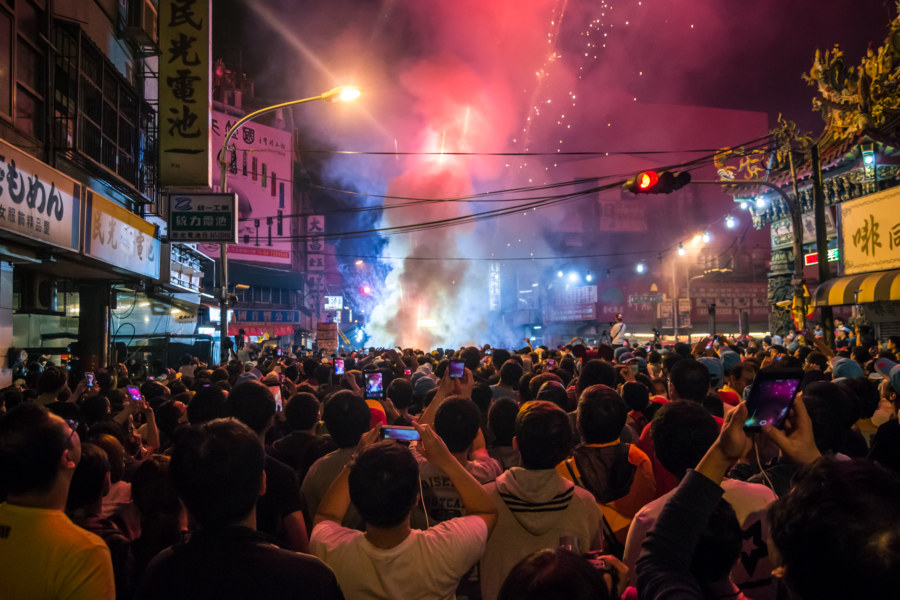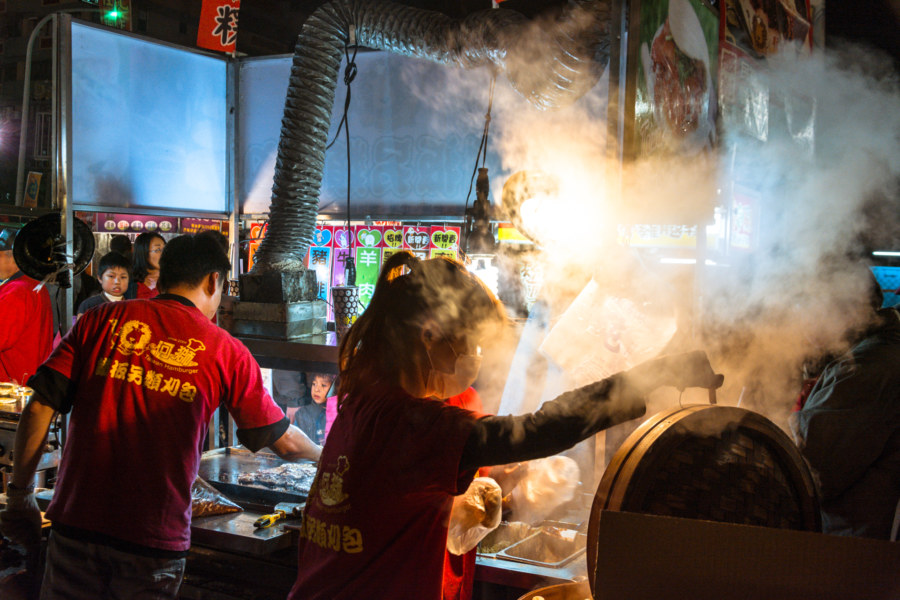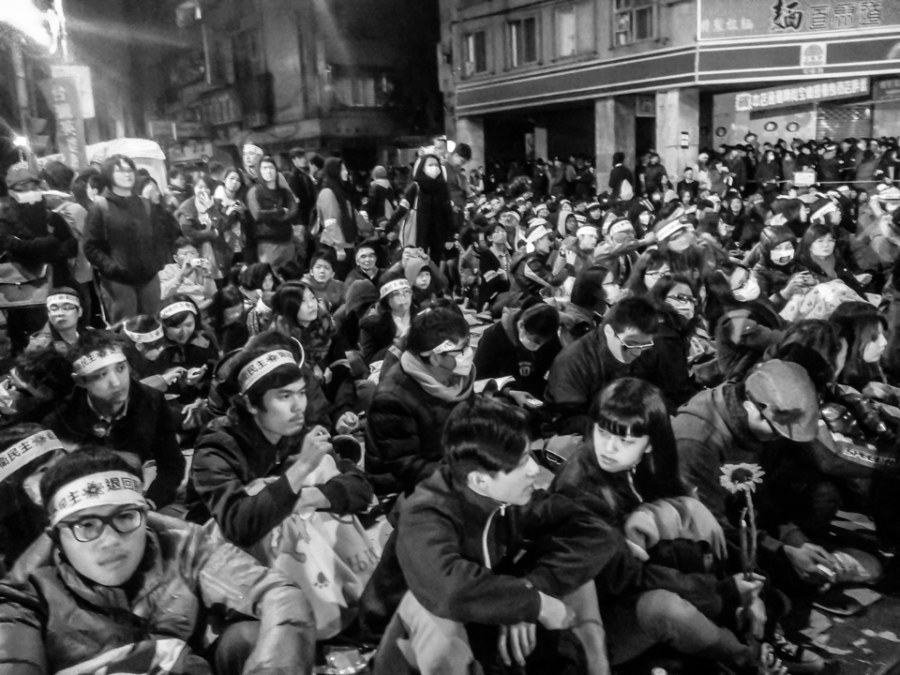It is hard not to notice the giant freaking eyeball and neon orange head hanging out at the side of the road leading up Hōnglúsāi Mountain 烘爐塞山 at the southern edge of Zhonghe, Taiwan. After taking in the scene I jokingly came up with a new slogan for the tourist bureau; “Taiwan: don’t ask why!” But of course that’s not really my style—I always like getting to the bottom of the seemingly inexplicable things I encounter in my travels here.
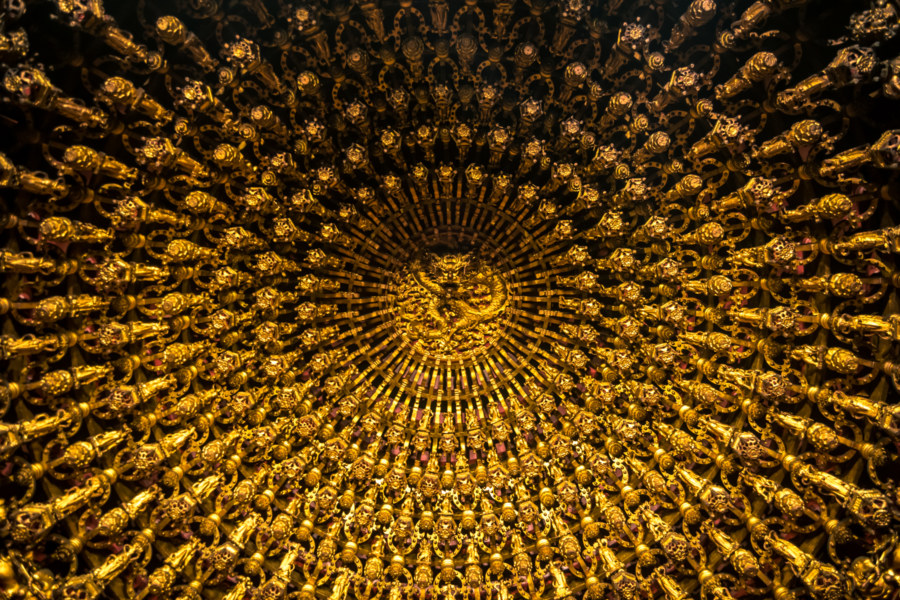
Cultural observations, insight, and confusion.
Tsai Ing-wen Old House 蔡英文古厝
Tsai Ing-wen’s childhood home in the village of Fenggang.
One of the more unexpected finds on my recent bicycle tour through the deep south of Taiwan was the childhood home of Tsai Ing-wen 蔡英文 (pinyin: Cài Yīngwén), current chairman of the Democratic Progressive Party and presidential contender in the upcoming 2016 general election. I was vaguely aware that she was born in Fangshan in Pingtung, the southernmost county in the nation, but hadn’t known any more than that prior to taking a short detour through the old fishing village of Fēnggǎng 楓港, founded in 1765 according to Chinese language Wikipedia. Imagine my surprise when I saw a small sign on the main road through town that directed me to Chairman Tsai Ing-wen Historic Home 蔡英文主席古厝!
When I arrived the courtyard was initially littered with trash. Several locals noticed my arrival and one quickly went to fetch a broom and clean up. I made what little conversation I could manage, not even knowing if my Mandarin was understood, and…
Keelung Ghost House 基隆鬼屋
Keelung Ghost House 基隆鬼屋, formally the Línkāiqún Mansion 林開群洋樓 (and sometimes Keelung Lin Residence 基隆林宅), is one of the most famous ruins in Taiwan. Much like Minxiong Ghost House 民雄鬼屋 and Xinglin General Hospital 杏林綜合醫院, it commonly appears on lists of the most haunted places on the island. This ghostly reputation makes it difficult to separate credible information from the many tall tales that are told, particularly through the dark glass of machine translation.
Zuoying Lotus Pond 左營蓮池潭
Lotus Pond 蓮池潭 is a manmade lake in Zuoying, Kaohsiung, widely known for its quirky assortment of pagodas, pavilions, and temples. Earlier this year I made a short stop at Lotus Pond on the way to the old walled city of Zuoying a little further south. I like exploring temples in Taiwan but was mildly concerned Lotus Pond would be a bit too touristy for my liking. Turns out I had nothing to worry about; my brief tour of the southwest side of the lake was memorable and fun.
Totoro Bus Stop in Taichung
Taiwan loves Totoro, the iconic star of Miyazaki’s animated classic My Neighbor Totoro. Known locally to Chinese speakers as Duōduōlóng 多多龍 (or 豆豆龍) and—my favourite—Lóngmāo 龍貓 (literally “dragon cat”), Totoro recently appeared on the streets of Taichung alongside Chibi and Chu Totoro, numerous makkuro kurosuke (soot sprites) and No-Face (who appeared in Spirited Away). These life-sized, fan-made sculptures have drawn so much interest that the site even appears on Google Maps as Dàlǐ Totoro Bus Stop 大里龍貓公車站.
Xinglin General Hospital 杏林綜合醫院
Xìnglín General Hospital 杏林綜合醫院 is perhaps the most famous ruin in downtown Tainan, Taiwan. It opened for business in 1975 as the largest hospital in the city and catered to the burgeoning middle class during the boom times of the Taiwan Economic Miracle. In 1993 the hospital shut down after being plagued by a number of scandals involving fraudulent records, medical malpractice, and allegations of wrongful death. Ongoing legal battles and fragmented ownership have left the building abandoned and neglected since then.
Twin Night Markets in Kaohsiung
I was drawn to the twin night markets of Kaisyuan Night Market (凱旋觀光夜市) and Jinzuan Night Market (金鑽觀光夜市) in Kaohsiung based on their reputation as the largest in Taiwan. Supposedly they are both approximately 30,000 square meters in size and feature 500 to 1,000 stalls—but these figures may represent the sum of both night markets. At any rate, I was a little surprised to discover how poorly attended they were on a Sunday night, particularly as I had just arrived from a brief tour of the busy Ruìfēng Night Market (瑞豐夜市) in Zuoying.
Mazu Mania in Changhua City 媽祖繞境
My last night in Changhua City was surprisingly eventful thanks to a fortunate accident of timing. Earlier in the day I had noticed an unusual uptick in the amount of activity on the streets while cycling around. Banquet tents had been setup on major thoroughfares, police were standing at major intersections, scooters flying yellow banners were buzzing around like angry hornets, and the air was filled with a palpable sense of expectation and excitement. After an early supper next to a coffee shop I often work at I approached to one of the staff (who speaks passable English) and asked, “What’s going on?” Their answer, “It’s the…” Trailing off, hands aflutter, obviously searching for the right word—and then: “Mazu!”
Douliu Night Market 斗六夜市
A couple of months ago I randomly took the train to Douliu, the capital of Yunlin, the most rural county on the western plains of Taiwan. Douliu is regularly the subject of jokes so I was pleasantly surprised by what I found there: an old street lined with Japanese colonial buildings, the quirky “Hungry Ghost” covered market, and an abandoned entertainment complex to explore. Even more surprising was the size of the Saturday night Renwen Park Night Market 人文公園夜市 located southwest of the downtown core. I have become something of a night market connoisseur since living in central and southern Taiwan and wouldn’t hesitate to declare this night market one of the biggest and best on the island.
Remember the Sunflowers
A year ago the Taiwanese people stood up to their elected government and halted the passage of a controversial free trade agreement by occupying the Legislative Yuan. This act of mass civil disobedience was soon christened the Sunflower Student Movement. I was living in Taipei when it all went down and visited the protest on several nights to watch history unfold. I am not a professional photographer, political observer, nor journalist, so please excuse the poor technical quality of the images and lack of elaboration in this gallery. It is my hope that these pictures capture something of the spirit of those wild, uncertain nights when anything seemed possible.
